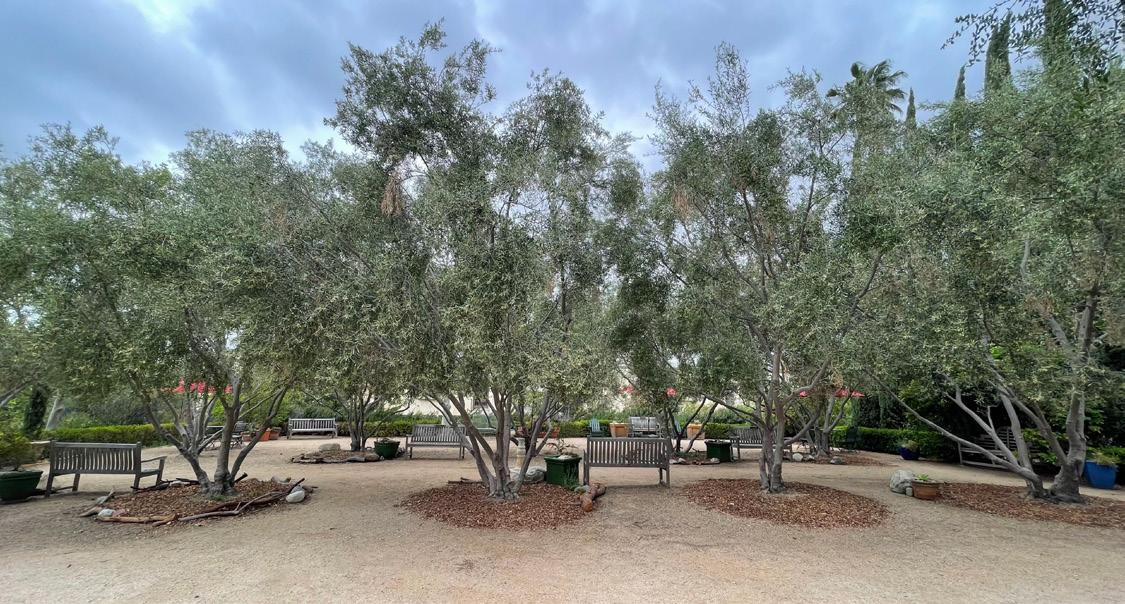
2 minute read
california pepper tree
GARDENING NOTES: an evergreen tree often wider than tall with drooping branches; female trees have panicles of pink fruits (peppercorns); classified as invasive by the California Invasive Plant Council, Arlington does not recommend planting new specimens of this species.
CRAPE MYRTLE HAS A STRANGE, SMOOTH TRUNK AND BLOSSOMS that last for a long time over the summer. All members of the genus Lagerstroemia are called “crape myrtles” in the United States, but the most common species are Lagerstroemia indica, Lagerstroemia fauriei, and their mutual hybrid.
Advertisement
The genus is not native to North America; it originates in Asia and parts of Oceania. Crape myrtles were first introduced in the 18th century in South Carolina at the vast gardens of the botanist André Michaux. Over the next 200 years, they increased in popularity as landscape plants in the American South, with some cities becoming synonymous with the plants, such as Paris, Texas, which still crowns an annual Crape Myrtle Queen.
100-DAY FLOWERS
Among other bloody tales about the crape myrtle, there is this one: According to a Korean folktale, there was once a serpent (imugi) who threatened a city by the sea. To protect themselves, or out of custom, the people of the city offered up young women as sacrifices to the monster. One year, it happened that the chosen woman inspired the pity of a young man. In order to save her, he set out on a boat to kill the imugi, telling her that if he succeeded, he would fly a white flag from the ship when it returned. If he failed, the flag would be red.
The young man sailed over the horizon, and 100 days passed. Each day, the woman walked down to the shore to look for his ship. On the 100th day, she saw it come over the horizon. As it drew closer, she perceived that its flag was red, and in a fit of terrible despair she took her own life. The ship arrived back at the city. The young man disembarked only to learn of the woman’s suicide. Distraught, he saw at once that the white flag on his ship had been stained with the dead serpent’s blood. After the woman was memorialized, her tomb sprouted strange red flowers that bloomed for 100 days. According to the tale, they are the source of the name “baegilhong,” which means “red for a hundred days.”
Wishes Across The Heavenly River
Our crape myrtles were once part of the artist Yoko Ono’s (2008) “Wish Tree for Pasadena” project at One Colorado in Pasadena. Over the three-month duration of the project, visitors attached more than 80,000 wishes to 21 trees.
Ono was inspired by wishes she had seen tied to trees in Japanese temple courtyards. In Japan, such wishes are a traditional part of Tanabata festival held on July 7th. For the festival, wishes are written on slips of paper called “tanzaku” and attached to bamboo “trees” in honor of the celestial lovers Orihime, the weaver princess, and Hikoboshi, the oxherd. According to the tale, the King of Heaven separated the lovers with the Milky Way, the “Heavenly River,” and allowed them to meet only on the Seventh Day of the Seventh Month. An ancient poem in the Manyoshu describes this reunion:
To-night he makes his one journey of the year
Over the Heavenly River, passing Yasu Beach —
He, the love-lorn Oxherd longing for his maid,
Whom he can never see but once a year, Though from the beginning of heaven and earth
They have stood face to face across the Heavenly River.
After Tanabata, it was once the custom in some places to place the tanzaku wishes in an earthly river to wash away. At the end of Ono’s project, the wishes were collected — removing them reportedly took over a week — and buried at the Imagine Peace Tower off the coast of Iceland.
Following the exhibit, the trees were donated to Arlington and, although no longer part of Ono’s project, continue to be used by our visitors for wishing.










